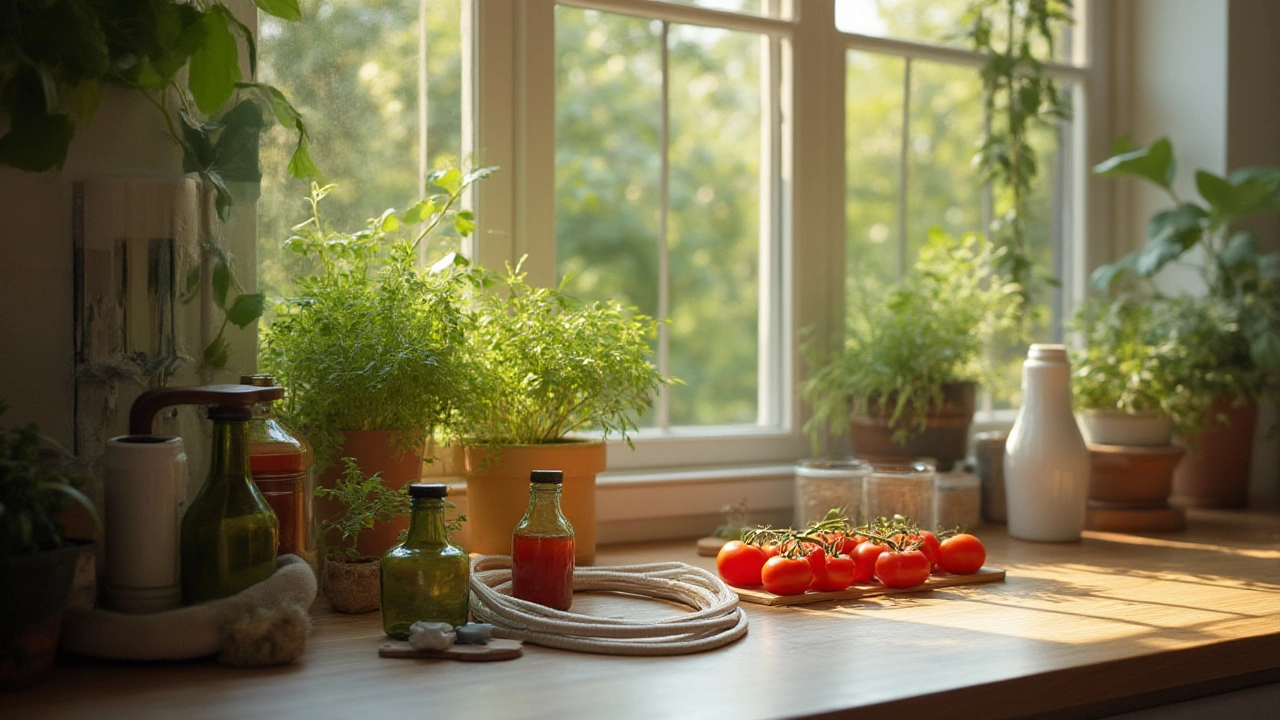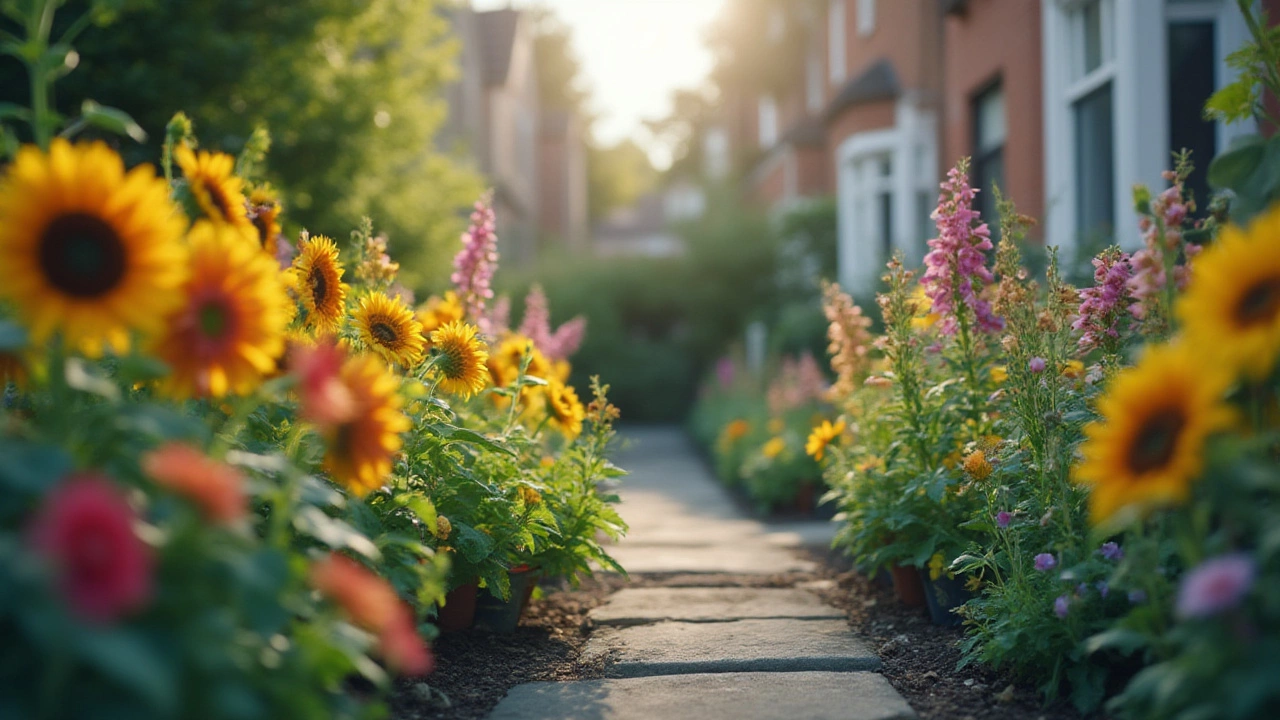Picture this: it’s peak summer, Brighton’s buzzing, and you’ve finally booked that week away. But those green beauties back home? They’re not cheering for your getaway. If you’ve ever returned from a trip to find your herb pots crispy or your lawn more yellow than green, you know the sinking feeling I’m talking about. Most folks underestimate just how quickly heat, sun, and a lack of rain can send even tough plants into panic mode. Your garden doesn’t take a break just because you do, and British weather’s as trustworthy as a dodgy umbrella; one dry week and you’re in trouble.
Understanding Your Garden’s Water Needs
Before you start prepping for your holiday, let’s break down what we’re really dealing with. Plants aren’t all created equal—they guzzle vastly different amounts of water. Tomatoes and cucumbers? Thirsty as marathon runners. Lavender and sedum? Practically camels. If you’re growing veg, especially in pots or raised beds, your watering schedule is your plants’ lifeline. On average, a mature tomato plant in full sun can need up to two litres of water a day. Pots dry out faster than borders, especially when it gets breezy or sunny. Lawns, on the other hand, might look sad after a dry spell but generally bounce back with a bit of rain, so focus your energy on the ones that really suffer without water.
Timing matters as much as quantity. Watering early in the morning helps roots absorb the moisture before things heat up, while evening watering reduces evaporation—but risks making leaves vulnerable to fungal diseases, especially here in the UK. If you’re only away for three or four days and there’s rain in the forecast, you might get away with skipping extra effort. A week or more, especially during a heatwave? You’ll need a plan. For those who love data—and who doesn’t—a study from the Royal Horticultural Society found that containers and hanging baskets need at least a soaking every two days in peak summer weather, or daily if temperatures climb above 22°C. Sprinkle in the unpredictability of British summer and you’ll see why a fail-safe solution makes all the difference.
Many gardeners don’t realise that soil composition and mulching have bigger effects than you’d think. Sandy or rocky soils drain like sieves, while heavy clay keeps moisture locked in for days. Adding organic mulch—wood chips, compost, even shredded newspaper—cuts evaporation rates by up to 75%, according to the University of Reading. That’s less water lost, more security for your roots, and more time to enjoy your break without stressing. Of course, knowing your plants’ needs helps you get creative with DIY solutions—and keeps you from drowning succulents or starving lettuce.

Smart DIY Watering Hacks for Your Holiday
Alright, you know your garden’s thirst level—now, let’s talk solutions. You don’t need a pricey underground irrigation system or to rope in a reluctant neighbour (although a mate with a watering can is never a bad thing!). Some of the best tricks are, honestly, dead simple and rely on stuff you’ve already got at home.
First up, the classic bottle trick. Take a clean two-litre plastic bottle, poke a few tiny holes in the cap with a needle or pin, fill it with water, then bury the bottle upside down near the base of your plants. As the soil dries, it draws small amounts of water out—a slow drip feed for thirsty roots. For pots and planters, you can cut the bottom off the bottle and stick the neck into the soil for the same effect. Another favourite for houseplants or patio pots is the string wick method: soak a cotton shoelace or length of yarn, poke one end deep in your plant’s soil, and drop the other end into a jug of water. Water travels along the string, keeping the soil damp while you’re sunning yourself somewhere else.
You’d be surprised how many overlooked items can come in handy. Old towels or newspapers, when soaked and layered around the base of your plants, hold onto water and shade the roots, reducing evaporation. Some folks swear by upturned wine bottles with a slow-release watering spike screwed onto the end—a bit more posh, but just as effective. You can even rig up a mini, gravity-powered drip-feed system with a large bucket and some thin siphon tubing; elevate the bucket, poke a hole in the base, and run tubing down to each plant. Gravity does it all, and you don’t need electricity or WiFi.
Clever mulching is your garden’s best mate when it comes to holding onto water. Mulch keeps roots cool, blocks harsh sunlight, and slows evaporation—shredded bark, straw, even lawn clippings do the job. Top up your mulch before you leave, aiming for a two-inch layer round your prized veg and flowers. And don’t forget pots: bunching them together in a shady spot, close to the house, creates a microclimate and helps cut down how fast they dry out. Here’s a pro move: move delicate pots indoors, or at least somewhere sheltered, to shield them from sun and wind.

Automatic Tech and Community Help for Effortless Watering
If you’ve got a bit more time or a knack for gadgets, there’s a whole world of low-fuss tech solutions for keeping your garden green and happy. Self-watering planters have built-in reservoirs—just fill them before heading off and let capillary action do the rest. Drip irrigation kits, now easy to fit even if you’ve only got a small patch, can be hooked up to a water butt or tap and run on a timer. A recent Which? Gardening test found even basic battery timer kits can keep veg beds steady for up to 10 days with minimal fuss. Bonus: drip irrigation gets water straight to the roots, slashing waste and helping prevent slugs that thrive on soggy leaves.
For the tech-savvy, smart watering systems now connect to your phone—yes, really—letting you monitor and adjust water flow in real time. If you’ve invested a bit in your garden, this might be worth every penny. Some smart systems even tap into local weather data and skip watering if it’s rained. It’s all controlled on apps that work faster than trying to phone a neighbour.
That said, you can’t always beat a good old human touch. There’s no shame in calling on your local neighbour or gardening group. If you’re happy to return the favour another time, ask someone nearby to swing by mid-week and check your pots, veg beds, and seedlings. Lay out your watering cans, leave clear instructions, and label which plants are most desperate for a drink. Do a walk-through before you hand over responsibility, pointing out new plantings and especially thirsty beds. For bigger gardens, some folks set up a rota or WhatsApp group to help each other out on holidays—Brighton’s gardening crowd is famously friendly about this.
Worried you’ll forget all this by the time you’re packing bags? A simple checklist—topping up mulch, gathering pots, sticking in bottles, testing timers—takes 10 minutes the day before you leave. Here’s the clincher: don’t overwater before you go. Roots need air as much as water, and soaking the soil just before you leave can drown plants or even trigger root rot, especially here on the coast where humidity sneaks up. Consistency beats one big deluge every time.
| Plant Type | Water Needed per Day | Special Notes |
|---|---|---|
| Tomatoes (potted) | 2 litres | Morning, avoid wetting leaves |
| Lettuce/Salads | 1 litre | Twice daily in extreme heat |
| Herbs | 0.5-1 litre | Rosemary/lavender need less |
| Hanging baskets | 1-1.5 litres | Add water-retaining gel |
| Lawns | Varies | Usually recovers after holidays |
In a nutshell, keeping your garden alive—and even thriving—while you’re away is all about knowing your plants, using some clever low-cost tricks, and not being afraid to ask for help or try a bit of tech. Want those tomatoes waiting for you, not greeting you with withered leaves? Water smart, prepare, and you’ll come home to a garden that barely noticed you’d gone away. Isn’t that the point of a good holiday?
